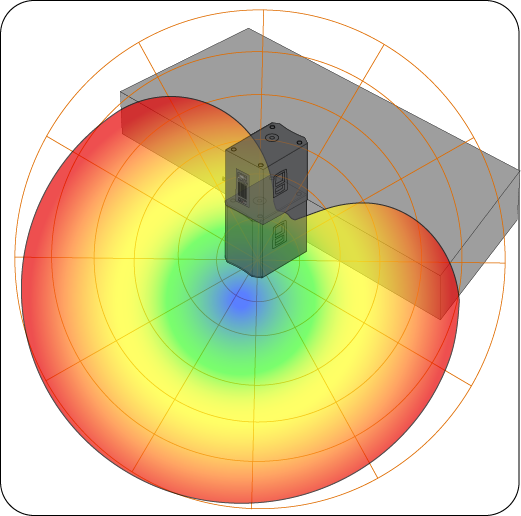QotD: Can I Place a Subwoofer on its Side?
Answer: Yes
Explanation: Why You Can Place a Subwoofer on its Side
Everyone once in a while, we here at AV Gadgets like to answer a Question of the Day. This week, it is about subwoofer orientation. We can’t tell you how many times we’ve been asked about subwoofer orientation. “Can I place a subwoofer on its side?” “Do front-firing subwoofers sound different that down-firing?” “Does it matter with my front-firing sub which direction I point the driver?”
The answer to the original question informs the rest. Yes, you can place a subwoofer on its side. Bass is omnidirectional. You’ve probably heard that before, but what does it mean? Let’s discuss.
Omnidirectional Bass and Your Room

Your subwoofer is putting out the lowest of the bass frequencies. If you’ve followed our crossover recommendations (80Hz regardless of speaker size), the shortest sound wave it creates is around 14 feet long. The longest will be over 56 feet! This is larger than most (if not all) home theaters. That means that the bass bounces off at least one wall before the wave completes one cycle. To our ears, the bass is coming from all around us because it is. It is bouncing around the room before we can even perceive it!
But it is more than that. The sound wave is so wide, it actually wraps around the subwoofer as it leaves the driver. This is such a problem that subwoofers have to be organized at live events to cancel each other out on the stage. If not, the bass will be so overwhelming that the musicians can’t hear what they are playing.
Placing a subwoofer on its side isn’t an issue because the bass doesn’t care about the orientation of the driver. The waves are so long and so big that they essentially have to fill the room before you can hear them. This also explains why front firing and down-firing doesn’t matter.
Driver Orientation and Subwoofers
So, why do some subs have one front-facing driver, others have one down-firing driver, and still others with multiple drivers? There are a lot of reasons. A designer might use multiple (or very large) drivers to hit certain performance parameters. They might choose a driver orientation because of aesthetic reasons. Look at the SVS 2000 Pro line of subwoofers. While their sealed versions have slightly less output, the ported box (front-firing) and ported cylinder (down-firing) have identical sonic characteristics. They use the same driver and amp. The differences were aesthetic (cylinder versus large box) and for footprint (cylinder has a smaller footprint but is taller) reasons. Not for any inherent differences in performance between the two different cabinet shapes.
Problems Placing a Subwoofer on its Side

There are two problems that arise when you place a sub on its side. First, subs have feet. These feet usually are attached via threaded insert. While it is uncommon, we’ve seen these threaded inserts actually open to the interior of the subwoofer. This means that if you remove the feet, you are creating multiple small ports. This will affect the performance of the sub as well as add a fun whistling sound whenever the sub operates. The solution is to attach the feet. This can draw attention to the fact that the sub is on its side.
The second issue is that you now have to worry about how to decouple the sub from the floor. We’ve addressed this before, but the quick solution is to use one of the subwoofer platforms that are on the market. This works nicely for box subs, but something like the SVS cylinders create more of an issue. If you choose to lay them on their side, you’ll need to probably sacrifice a couple of towels to put under it.
Conclusion
In the end, remember that the sound that comes from your subwoofer interacts with your room before you can hear it. It doesn’t matter if you face your subwoofer driver towards you or away. Want to place your subwoofer upside down? Have at it. As long as you aren’t inhibiting the motion of the driver or facing the driver into a surface, it should make no difference to the sound.


